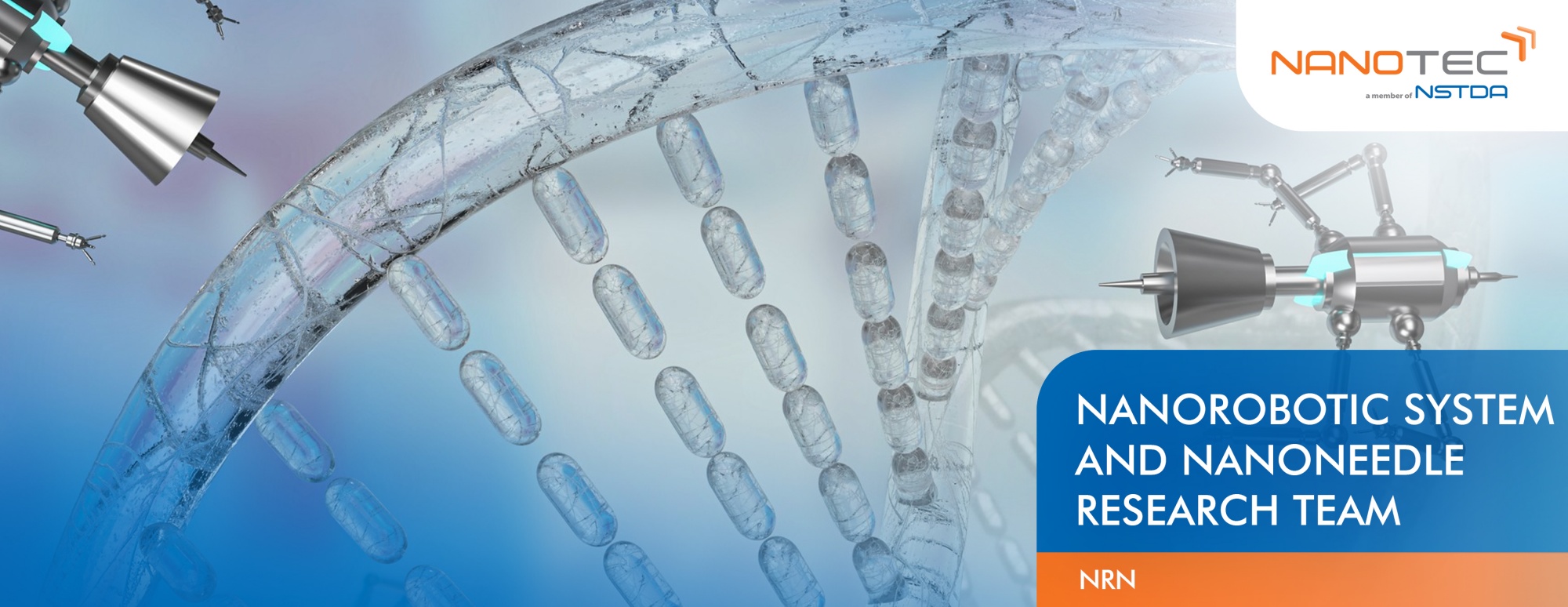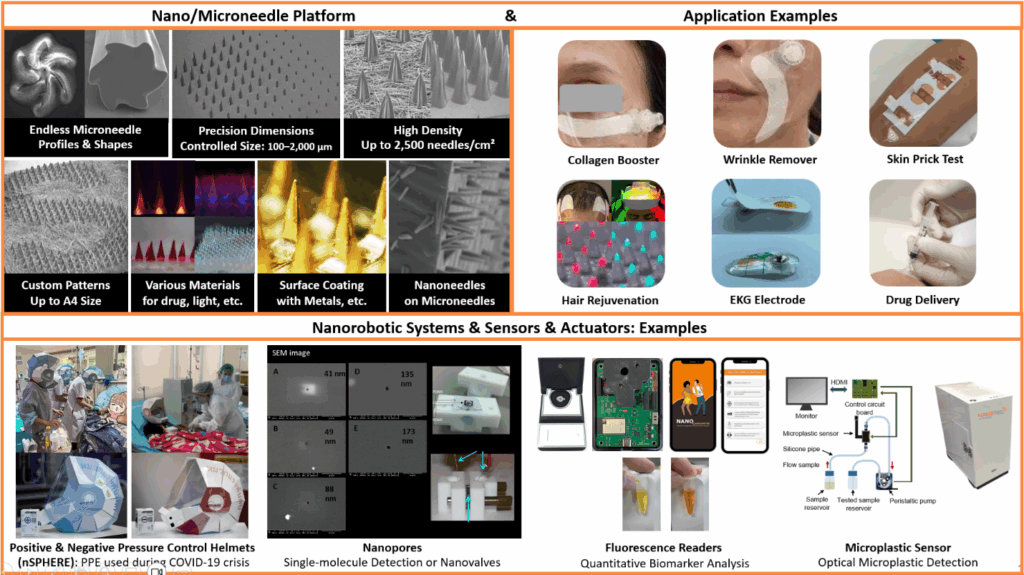
Nanorobotic System and Nanoneedle Research Team
he Nanorobotic System and Nanoneedle Research Team (NRN) focuses on the research and development of systems, tools, and machinery from nanoscale components using novel top-down and bottom-up fabrication methods for innovative applications, with consideration for industrial-scale production.
In recent years, the research team has developed an “ultrafast microneedles manufacturing process with adjustable features,” which has received both national and international awards. Following the ISO 13485 standard, this process has been used to design, development, and manufacture microneedles for painless delivery of substances, light, or electrical energy through the skin, addressing needs in health, beauty, and medical applications.

Other examples of the research team’s work include:
- Positive and negative pressure control helmet (nSPHERE): A personal protective equipment designed to control the spread of airborne particles and droplets, used by healthcare personnel and patients during the COVID-19 crisis.
- Nanopores for single-molecule detection, such as albumin, or applied as nanovalves.
- Fluorescence signal readers for the quantitative detection of albumin, glycated albumin, and creatinine.
- Automated microplastic sensors for quantifying microplastics using optical detection methods.
Current research projects
- Design and Development of Innovative Microneedles for Emerging Applications
- Microplastic Sensor Phase 2: Optimization and Validation for Enhanced Accuracy and Reliability
- FF68-4 Development of the microneedle device for transdermal interstitial fluid sampling
- NNS67-6: Development of Fluorometers for Albumin and Glycated Albumin Analysis
- Product developments and clinical trials of a device for transdermal interstitial fluid sampling using microneedle
- DI: Comparison of skin prick test using microneedles and lancets for entering ISO 13485 certification process

